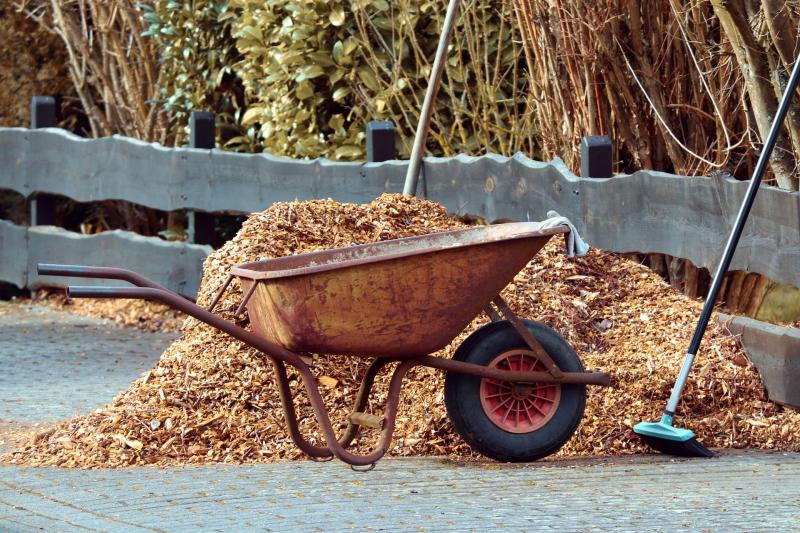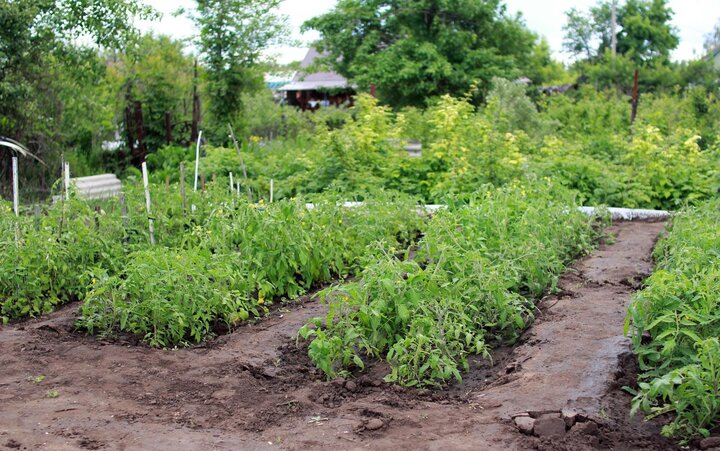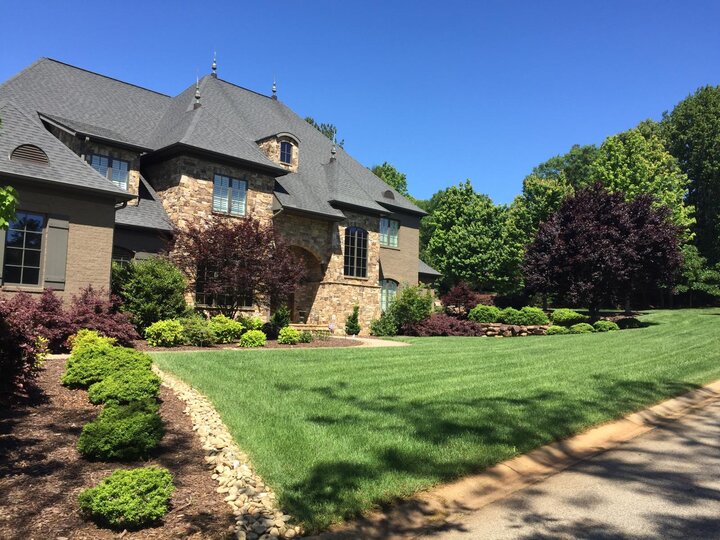Sarah Browning, Nebraska Extension Educator

Knowing the square footage of a landscape bed will make it easier to determine how much mulch is needed. Image from Pixabay.com.
While you may not think of it much, mathematics is an important part of yard and garden care. Planning for planting, fertilizing, mulching, and pest control all involve some math, yet it is often overlooked.
For example, do you know square footage (sq.ft.) of your planting beds, vegetable garden or lawn? Once these figures are known, record them so they are readily available when needed.
Calculating Square Footage
Individual planting beds or garden areas can simply be measured and the square footage calculated. For example, area of a garden measuring 20 feet by 25 feet would be 20 x 25, or 500 square feet.
If your landscape areas aren’t conveniently square, rectangular or circular – and let’s be honest, most aren’t – then break them up into smaller sections that can be calculated as either a square, rectangle, triangle or circle. Then add these smaller sections together, giving you a total square footage for each landscape bed or turf area.
Keep in mind these basic formulas to make these calculations. And remember, the radius of a circle is measured from the circle’s center point to the edge. As compared to diameter, which is measured all the way across the circle, from edge to edge.
- Area of a square or rectangle - length times width or L x W.
- Area of triangle - base times height and dividing by 2 or (L x W) / 2.
- Area of a circle - radius squared (take it times itself), then multiplied by 3.14 or R2 x 3.14.
Calculating Large Areas
Larger areas, such as for lawns, can be calculated different ways. One way is to take the entire size of the lot and then subtract everything that is not lawn area. Keep in mind an acre is 43,560 square feet.
If your lot is 1/2 acre, divide 43,560 by 2. If it’s 1/4 acre divide 43,560 by 4. This gives you the base square footage of your entire lot. Then subtract the area of the house, drive, deck, and gardens.
Another way would be to break up the property into separate lawn sections and calculate the square footage of each.

Using Your Garden Calculations
Why are these area figures needed? If planning a vegetable garden, space available needs to be known before seeds or transplants are ordered so you don't get too many or not enough. Likewise with flowers, groundcovers, or grass seed. Proper spacing and seeding rates are important in the success of a planting. Pesticide applications are based on square footage, too, with many labels using language indicating that a tank of diluted pesticide should be applied to a certain square footage of lawn, such as 100 sq.ft. or 1000 sq.ft.
Square footage calculations are also needed to determine the amount of soil amendments or fertilizer needed for your applications. So, for example, before fertilizer can be applied the area of the lawn or garden needs to be known. For field crops, these rates are usually given on a per acre basis, but for landscapes rates are usually given as listed below.
- For garden areas, rates are typically given as pounds of material per 100 square feet of garden area.
- For lawns, rates are usually expressed as pounds of material per 1,000 square feet.

Landscape Calculators
If math is not your strong suit - like me! – there are online calculator tools which can be a big help! But in most cases, you still need a base square footage for each landscape area to get started.
As the weather allows, take a stroll around your yard and make the necessary measurements. Then you’ll be ready for spring planting, knowing exactly how much product or plant materials you’ll need.
Reference to commercial companies is made with the understanding that discrimination is intended and no endorsement by Nebraska Extension is implied. Mention does not imply approval or constitute endorsement by Nebraska Extension. Nor does it imply discrimination against other similar products.
Images
- Knowing the square footage of a landscape bed will make it easier to determine how many plants are needed. Image from Pixabay.com.
- Grass seed, fertilizer and pesticide application rates are all based on the turf area's square footage. Image by John Fech, Nebraska Extension.
Search Our Archive
Associated Video
Landscape Math
Nebraska Extension Educators John Fech and Sarah Browning give some simple math tips for figuring out area and cubic yards.